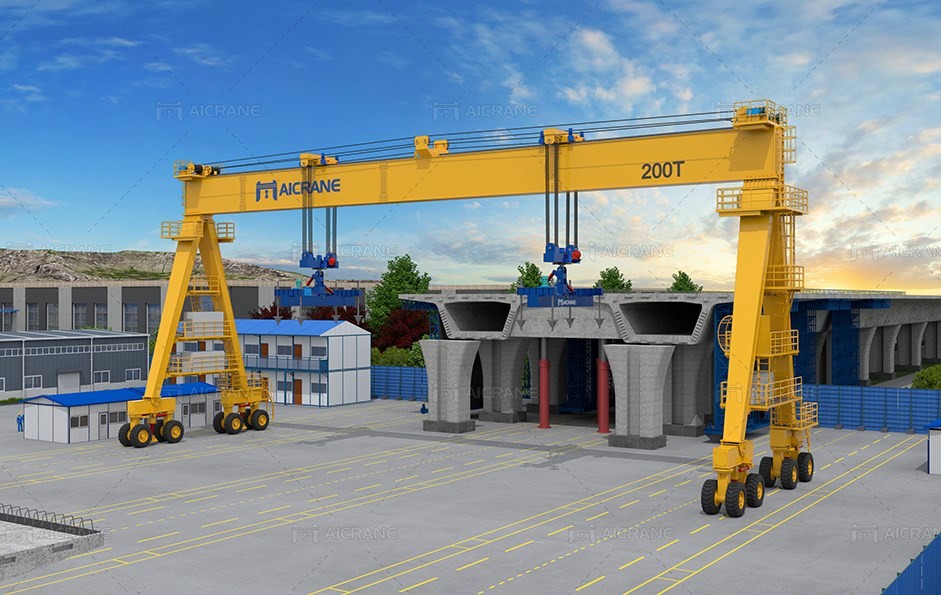Introduction
A crane is a powerful and essential machine used in construction and various other industries to lift, lower, and move heavy materials with precision and efficiency. Cranes are designed with complex mechanical and hydraulic systems that enable them to handle loads that would be impossible for human workers to manage.
Purpose of Cranes in Construction
Cranes serve several critical purposes in construction:
1. Lifting and Lowering Loads: Cranes are primarily used to lift and lower heavy materials and equipment, such as steel beams, concrete blocks, and machinery, to different heights.
2. Material Movement: Cranes can transport heavy materials horizontally across a construction site, improving efficiency and reducing the need for manual labor.
3. Precision Placement: Cranes allow for precise placement of materials, which is crucial for tasks that require high accuracy, such as setting steel frameworks or positioning large precast concrete elements.
4. Safety Enhancement: By handling heavy loads, cranes significantly reduce the risk of injuries associated with manual lifting and moving of materials.
Components of a Crane
Cranes are complex machines composed of several key components:
1. Boom: The long, extendable arm of the crane, which can be either fixed or telescopic.
2. Jib: An extension of the boom that increases the crane’s reach.
3. Counterweights: Weights added to the opposite side of the crane’s load to balance and stabilize the machine.
4. Cab: The control center where the operator sits and controls the crane.
5. Hoist: The mechanism that lifts and lowers the load using wire rope or chain.
6. Slewing Unit: The part of the crane that allows the boom to rotate.
7. Undercarriage: The base of the crane, which provides stability. For mobile cranes, this includes the wheels or tracks.
Types of Cranes in Construction
There are several types of cranes used in construction, each designed for specific tasks and environments:
1. Tower Cranes
Tower cranes are a common sight at major construction sites, particularly for skyscrapers and other tall structures. They are characterized by their tall, fixed mast and long horizontal jib. Tower cranes are capable of lifting extremely heavy loads to great heights and offer excellent stability and reach.
2. Mobile Cranes
Mobile cranes are versatile and can be easily transported to different sites. They come with wheels or tracks, making them suitable for rough terrains. Mobile cranes include:
– Truck-Mounted Cranes: These cranes are mounted on trucks, providing mobility and ease of setup.
– Rough Terrain Cranes: Designed for off-road use, these cranes have large rubber tires and are ideal for rough and uneven ground.
– Crawler Cranes: Equipped with tracks instead of wheels, crawler cranes offer excellent stability and can move around a site without the need for outriggers.
3. Overhead Cranes
Also known as bridge cranes, overhead cranes are typically used in factories and warehouses. They consist of a hoist that moves along a horizontal beam (bridge), which in turn moves along rails. These cranes are ideal for moving heavy loads across large distances within a facility.
4. Gantry Cranes
Gantry cranes are similar to overhead cranes but are supported by freestanding legs that move on wheels or along a track. They are often used for outdoor applications, such as shipyards, railyards, and large construction projects.
5. Loader Cranes
Loader cranes, or knuckle-boom cranes, are compact, flexible, and often mounted on trucks. They have a jointed boom that can fold for easy transport and unfold for lifting tasks. These cranes are commonly used for loading and unloading materials from trucks.
6. Floating Cranes
Used in marine construction, floating cranes are mounted on barges or other watercraft. They are essential for building bridges, ports, and offshore structures, as well as for salvage operations.
7. Telescopic Cranes
Telescopic cranes feature a boom with multiple sections that can extend or retract, allowing for adjustable reach and height. These cranes are highly versatile and can be used in various construction projects.
8. Railroad Cranes
Railroad cranes are specially designed for railway maintenance and construction. They travel on railroad tracks and are used to lay track, lift and place rail segments, and handle other rail-related materials.
9. Aerial Cranes
Also known as sky cranes, aerial cranes are helicopters equipped with lifting capabilities. They are used in inaccessible or hard-to-reach areas, such as mountain construction, disaster relief, and installing rooftop HVAC units.
10. Level Luffing Cranes
Level luffing cranes have a unique jib mechanism that keeps the load level while being lifted or lowered. They are commonly used in shipyards and ports for loading and unloading ships.
11. Deck Cranes
Deck cranes are used on ships for loading and unloading cargo. These cranes are built to withstand the harsh marine environment and are essential for handling cargo without the need for port cranes.
12. All-Terrain Cranes
All-terrain cranes are a hybrid of mobile truck cranes and rough terrain cranes, capable of traveling on both paved roads and off-road sites. They are highly versatile and can be used in various construction and industrial applications.
Conclusion🎯
Cranes are indispensable machines in the construction industry, providing the ability to lift, move, and place heavy materials with precision and safety. Whether it’s a towering skyscraper, a sprawling bridge, or a complex industrial facility, cranes play a vital role in bringing architectural and engineering visions to life.

